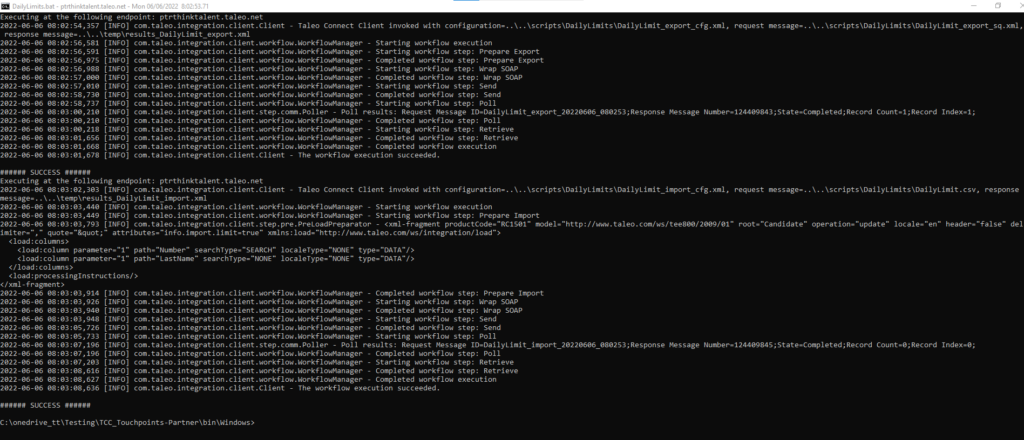So looping is great if you have a static set that you are pulling, think a big set of resumes. But what if you are using this as part of an ongoing and looping is needed with a LRD. Fear not, this is how you do it.
Pre-processing:
1st step – com.taleo.integration.client.customstep.paging.PagingPreStep
Arguments:
pagingSize
100000
pagingFilename
[CFGFOLDER]\pagefile.pgn
2nd step – com.taleo.integration.client.customstep.lrd.LRDPreStep
Arguments :
lrdFilename
LRD filename, this will be the name as created by the config in the standard LRD location
Post-processing (no arguments needed):
1st step – com.taleo.integration.client.customstep.count.ExportCountPostStep
2nd to last step – com.taleo.integration.client.customstep.paging.PagingPostStep
Last step – com.taleo.integration.client.customstep.lrd.LRDPostStep

